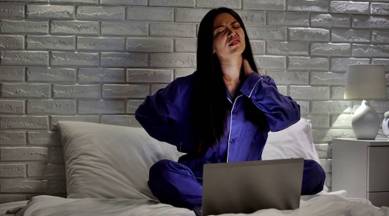📣 For more lifestyle news, click here to join our WhatsApp Channel and also follow us on Instagram
‘Zoom fatigue’ affects women more than men, says study
Stanford researchers surveyed participants to better understand the individual differences of burnout from the extensive use of video conferencing technologies amid the pandemic

Meetings from home, over virtual platforms, have taken a toll on most of us. But a new study has shown that it has impacted women more than men.
The exhaustion caused by online meetings or what is now known as ‘Zoom fatigue’ has affected one in seven women (13.8 per cent, compared with one in 20 men (5.5 per cent), who reported feeling “very” to “extremely” fatigued during the online calls, revealed the study by Stanford researchers. The study has been published in the journal Technology, Mind and Behaviour.
The researchers surveyed 10.322 participants in February and March and used their ‘Zoom exhaustion and Fatigue Scale’ to better understand the individual differences of burnout from the extensive use of video conferencing technologies amid the pandemic, reported news.stanford.edu.
“We’ve all heard stories about Zoom fatigue and anecdotal evidence that women are affected more, but now we have quantitative data that Zoom fatigue is worse for women, and more importantly, we know why,” Jeffrey Hancock, professor of communication in the School of Humanities and Sciences and co-author of the study, was quoted as saying.
What caused more exhaustion among women was what is called “self-focused attention” by social psychologists, triggered by self-view in video conferencing. Prolonged self-focus can result in negative emotions or what researchers call “mirror anxiety”.
Zoom fatigue was also found to be caused by the lack of physical movement. Unlike face-to-face meetings where people can move around, pace or stretch, video conferencing limits movement.
Besides, researchers found that while women have the same number of meetings per day as men, their meetings tend to run longer. Women were also found less likely to take breaks between meetings, which also contributed to increased weariness.
For more lifestyle news, follow us: Twitter: lifestyle_ie | Facebook: IE Lifestyle | Instagram: ie_lifestyle
📣 For more lifestyle news, click here to join our WhatsApp Channel and also follow us on Instagram